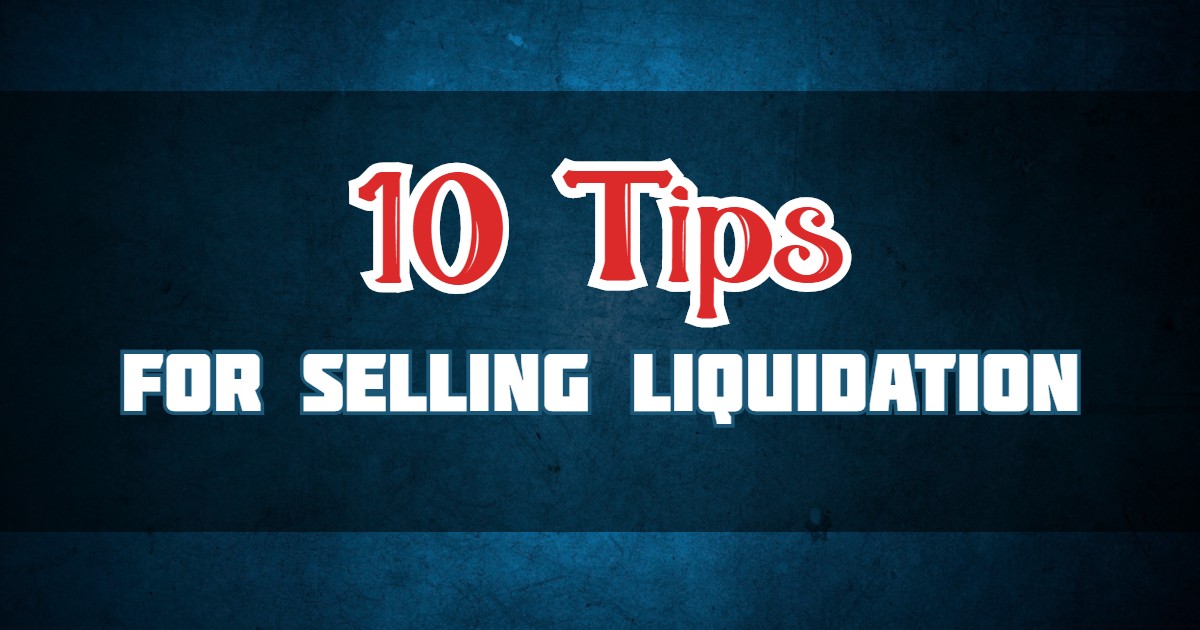Liquidation is a category of merchandise that can be very profitable to the reseller. It can be very challenging for the inexperienced, so here are a few tips to help you get started.
1. Location is KEY. You, as the buyer, are paying the freight charges to have the inventory delivered to you (even if the seller tells you they are paying for shipping). The closer you are to the origination location, the less you will have to pay to transport the goods. Shipping pallets or truckloads of liquidation merchandise is not cheap.
2. Determine if the liquidator is also selling through retail channels. If they are also selling on eBay, Amazon, etc., chances are they are pulling the best merchandise and retailing it there, selling the remaining items as liquidation. Even if they don’t pull all of the best items for themselves, you don’t want to go into competition with your supplier. They are getting the merchandise cheaper than you and can beat you on price. Every time.
3. Your Reputation is CRITICAL to your success. Your reputation in dealing with liquidators will precede you, so manage your reputation with care. In the liquidation business, you need the suppliers more than they need you.
4. Read the Fine Print. It’s the things you agree to but didn’t read that can come back to bite you. The contracts that you didn’t create are not for your protection. They are not for your benefit (in most cases). Know what you are signing. If the liquidation deals are “so great” that the suppliers want you to sign without reading – Walk away.
5. ALL SALES ARE FINAL. Remember this, and conduct your business with this in mind, and you will make fewer buying mistakes. Don’t expect the liquidator to take the loss for your poor research practices.
6. Potential Profit and Potential Loss are two sides of the same coin. Not every liquidation load from a good supplier will be great. Not every pallet in a good load will be profitable. Not every item on a good pallet will be sellable.
7. There is a Grading System in the Liquidation business. Learn it.
8. Make connections with others that do what you do. Everybody is not equipped process a full truckload of liquidation merchandise. Not everyone has access to the same customer base. Pool resources with others and increase your ability to move more merchandise, which can result in lower costs and higher profits. Check out this Facebook Group with thousands of Liquidation buyers and sellers. Perhaps you can make some connections there.
9. Amazon is not eBay. Be very careful if you choose to sell liquidation items on Amazon. If a buyer claims that you sold a used item as new, or sold an inauthentic item, your liquidation manifest will not be accepted as proof. You will very likely lose your Amazon Seller Account. Permanently.
10. Have a backup plan for selling inventory. Planning to buy liquidation to sell on eBay, flea markets, Amazon, etc? What about the stuff that doesn’t sell? Don’t get stuck with inventory and no way to move it. Get to know a local auctioneer. Find some local places to donate (homeless shelters, half-way houses, church thrift stores, etc.). Know when to cut your losses and don’t become attached to anything. Cash to inventory to cash. The goal is to get back to cash as quickly as possible.
Liquidation, when handled properly, is one of the most profitable business models for moving inventory that you can do. Feel free to comment below.

About the Author
Greg Purdy is the founder and co-owner of Seller Essentials, the resource website for all things Ecommerce. He lives in Maryland with his wife and children.
Subscribe to Essential Updates
for more resources, tips, and strategies to help grow your online business.

